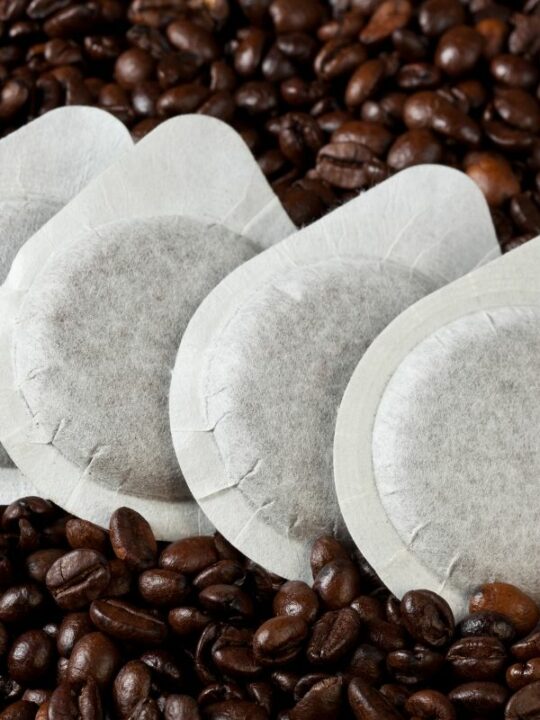Ever since the 15th century, when traders from the Ottoman Empire discovered coffee beans along regional trade routes in North Africa, people have found a way to brew it.
The Ottomans would roast the beans and grind them using mortars, before boiling them in a cezve pot.
This style of Turkish coffee, considered the earliest method of making coffee, is still popular today. That said, in the time since, many other brewing methods have emerged.
The French press was invented in 1852, and in 1933, Alfonso Bialetti created the Moka Pot in his native Italy.
In 1941, Peter J. Schlumbohm of Germany developed the Chemex.
Now, however, it is increasingly common to find a capsule coffee machine––first launched by Nestle in 1986––rather than any of these more traditional brewing methods, on your average kitchen counter.
Capsule machines are great because they do most of the work for you! However, have you have found a jar of unused pods lying around and not been sure whether they will still make a good coffee or are too old?
If so, read on for an explanation of how long coffee pods stay good for and why!
How long do coffee pods last?
Coffee pods don’t “go bad,” so you can safely use them as long as they are still correctly sealed. However, they won’t keep their fresh taste forever, so try to use them within eight months of the “best before” date. If pods are damaged, do not use them. If pods contain milk, use before the “expiration date.”
“Expiration date” vs. “Best before date” on coffee pods
As with most foods, there is no exact, predictable date on which coffee will go from being “good” to being “bad.”
Most of us are familiar with the difference between an “expiration date” and a “best before date.”
An expiration date is usually used for perishable items. However, coffee is not really perishable, and for this reason, some coffee producers have started to use best before dates instead of expiration dates.
This simply means that the product will be more enjoyable if consumed before a given date, because it will be fresher.
However, for all intents and purposes, you can treat expiration and best before dates on coffee pods as meaning the same thing. The one exception to this rule is coffee pods that contain milk, as we shall see below.
When it comes to sealed coffee pods that contain only coffee grounds, the common wisdom is that you can continue to use them even after their expiration or best before date has passed.
Most coffee connoisseurs recommend consuming them within three to eight months of the printed date. After this, they will likely begin to markedly lose in freshness and therefore in taste.
You can prolong the freshness of your pods by storing them in a cool, dark place.
Coffee pods without printed expiration dates
While some coffee pod makers are savvy enough to print the expiration or best before dates right on each individual capsule, others choose to print it on the box the capsules come in.
Unfortunately, this box will often get put in the recycling before all the capsules have been used.
So, if you are deciding whether to use a pod, you can rest assured that it will not harm you just because it is old. Pods are hermetically sealed, which prevents mold and bacterial growth. This means that you can still safely drink it, it just may not be as fresh as you would like it to be.
Whether you use it or not may just depend on how badly you want a coffee and what your other options are!
Damaged coffee pods
The idea for the coffee pod was first conceived of by Eric Favre, an engineer who worked for Nestle, as he watched baristas in an Italian bar make coffee.
He noticed that they would pull down the levers on the coffee machine when making espresso in order to increase the pressure with which the hot water was pushed through the grounds.
This changed the extraction speed of the coffee and created coffee with more crema, the brown froth that sits on top of espresso.
Inspired to see if this method could be “captured” and used at home, Favre experimented with adding pressurized air into water and ground coffee.
Coffee pods work by having perfectly heated, pressurized hot water pumped through the ground coffee they contain. There is a filter at the bottom of the pod, which prevents coffee grounds from getting into your coffee.
In addition to keeping coffee grounds fresh, the sealed foil that covers coffee pods is also designed to create just the right pressure to make a great cup of joe.
If your coffee pods show signs of damage, for example, if the foil has come off or been pierced through, or it there is a hole anywhere else in the pod, do not use them.
If a coffee pod has been damaged, this likely means that moisture has gotten into them and bacterial or mildew growth may have taken place. This poses a potential risk to health and you should dispose of any damaged pods and use safely sealed ones instead!
Make sure you consider the environment when disposing of your unused pods and recycle them appropriately!
Coffee pods that contain milk
Some coffee pods contain milk. This milk is UHT. Ultra-high temperature milk has undergone a special pasteurization and packaging process, which means it has a shelf life of between six and nine months if unopened.
Once opened, UHT milk needs to be consumed within a week.
Coffee capsules that contain UHT milk should be consumed before their expiration date. If a milk-containing capsule shows any signs of damage, it should be disposed of immediately.
The same goes for any kind of pod that contains milk, be it a mocha or hot chocolate, or if pods are your preferred way to brew and drink black tea!
